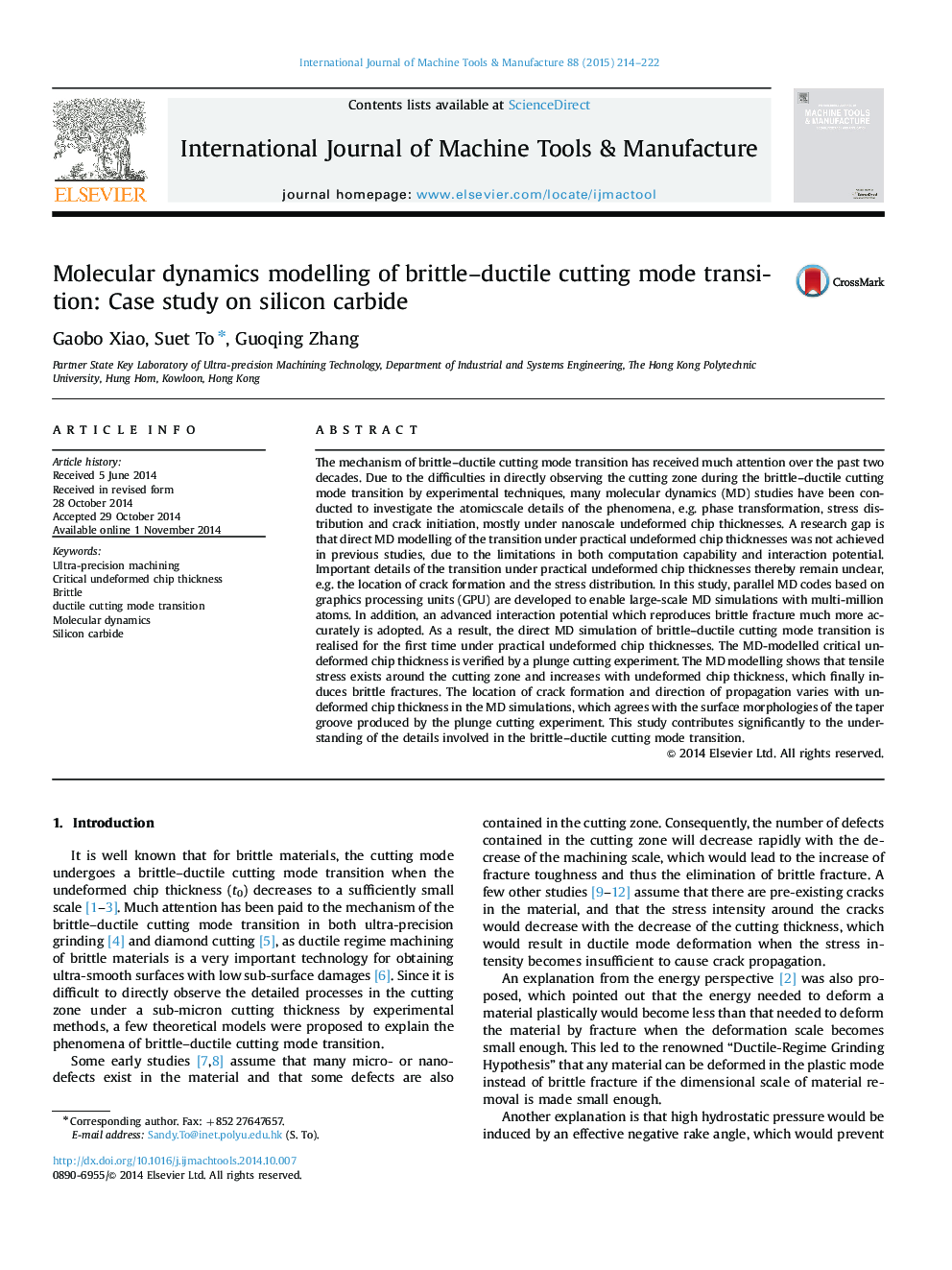| کد مقاله | کد نشریه | سال انتشار | مقاله انگلیسی | نسخه تمام متن |
|---|---|---|---|---|
| 7173437 | 1464505 | 2015 | 9 صفحه PDF | دانلود رایگان |
عنوان انگلیسی مقاله ISI
Molecular dynamics modelling of brittle-ductile cutting mode transition: Case study on silicon carbide
ترجمه فارسی عنوان
مدل سازی دینامیک مولکولی انتقال حالت شکنندگی شکننده: مطالعه موردی کاربید سیلیکون
دانلود مقاله + سفارش ترجمه
دانلود مقاله ISI انگلیسی
رایگان برای ایرانیان
کلمات کلیدی
ماشینکاری فوق العاده دقیق، ضخامت تراشه ناپایدار بحرانی، شکننده تغییر حالت مجسمه سازی دینامیک مولکولی، کاربید سیلیکون،
موضوعات مرتبط
مهندسی و علوم پایه
سایر رشته های مهندسی
مهندسی صنعتی و تولید
چکیده انگلیسی
The mechanism of brittle-ductile cutting mode transition has received much attention over the past two decades. Due to the difficulties in directly observing the cutting zone during the brittle-ductile cutting mode transition by experimental techniques, many molecular dynamics (MD) studies have been conducted to investigate the atomicscale details of the phenomena, e.g. phase transformation, stress distribution and crack initiation, mostly under nanoscale undeformed chip thicknesses. A research gap is that direct MD modelling of the transition under practical undeformed chip thicknesses was not achieved in previous studies, due to the limitations in both computation capability and interaction potential. Important details of the transition under practical undeformed chip thicknesses thereby remain unclear, e.g. the location of crack formation and the stress distribution. In this study, parallel MD codes based on graphics processing units (GPU) are developed to enable large-scale MD simulations with multi-million atoms. In addition, an advanced interaction potential which reproduces brittle fracture much more accurately is adopted. As a result, the direct MD simulation of brittle-ductile cutting mode transition is realised for the first time under practical undeformed chip thicknesses. The MD-modelled critical undeformed chip thickness is verified by a plunge cutting experiment. The MD modelling shows that tensile stress exists around the cutting zone and increases with undeformed chip thickness, which finally induces brittle fractures. The location of crack formation and direction of propagation varies with undeformed chip thickness in the MD simulations, which agrees with the surface morphologies of the taper groove produced by the plunge cutting experiment. This study contributes significantly to the understanding of the details involved in the brittle-ductile cutting mode transition.
ناشر
Database: Elsevier - ScienceDirect (ساینس دایرکت)
Journal: International Journal of Machine Tools and Manufacture - Volume 88, January 2015, Pages 214-222
Journal: International Journal of Machine Tools and Manufacture - Volume 88, January 2015, Pages 214-222
نویسندگان
Gaobo Xiao, Suet To, Guoqing Zhang,
